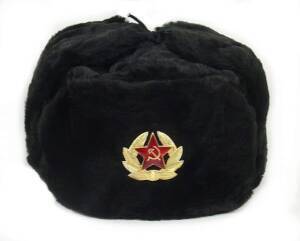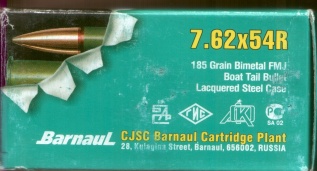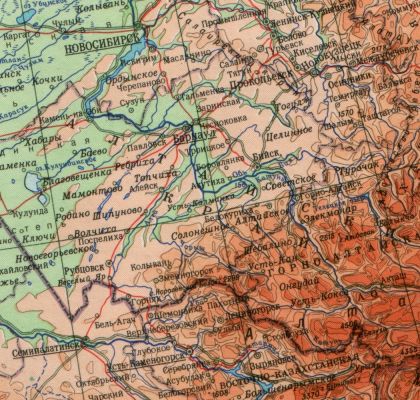
The 7.62x54mmR Cartridge
The 7.62x54mmR Cartridge
The 7.62x54mmR cartridge was introduced as a service cartridge 133 years ago, in 1891, and remains in military service today. This gives it the longest service life of all military cartridges in the world. It is currently used mostly in sniper rifles such as the Dragunov (the Снайперская винтовка Драгунова or Snayperskaya Vintovka Dragunova, SVD) and some machine guns such as the PKM. As for history, it was designed for the Imperial Russian Винтовка Мосина or Vintovka Mosina, the "3-Line" Rifle sometimes called the "Mosin-Nagant" outside Russia.
7.62 mm = bore diameter
54 mm = case length
R = rimmed
Its ballistic performance is similar to that of the 7.62x51mm NATO or .308 Winchester cartridge, and close to that of the .30-06 Springfield.
Its cartridge case has a capacity of 4.16 ml. The official C.I.P. guidelines say that the 7.62x54mmR case can handle up to 390 MPa (or 56,564 psi) piezo pressure.
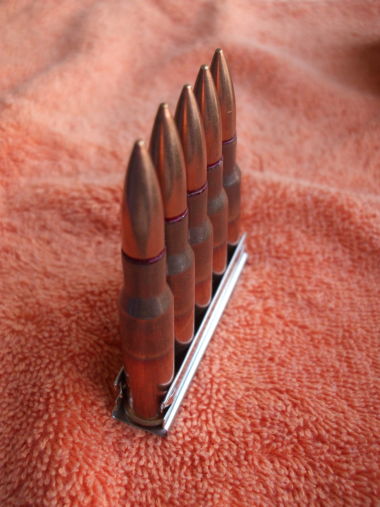
Five 7.62x54mmR cartridges in a stripper clip.

Diagram of the 7.62x54mmR cartridge design.

Metallurgy became more important in arms design around the time of the cartridge's development. The gun's receiver and barrel obviously had to be stronger to contain the higher pressures of smokeless powder. The ammunition's case also had to be strong enough to withstand increased pressure and then be yanked from the chamber by the extractor and kicked aside with the ejector so the next round could be automatically stripped from the stack in the magazine and slammed into place.
The bullet's jacket and its binding to the core had to withstand the rapid linear and rotational acceleration through the rifled barrel. The common rifling twist for this round is 1 turn in 240 mm (or 9.45 inches); four grooves of diameter 7.92 mm, lands of width 3.81 mm and diameter 7.62 mm.
The original design used a 13.7 gram (210 grain) round-nosed full metal jacket bullet. Although it seems obvious to us in today's world of aviation, pointed bullets have better aerodynamic performance. The French were the first to recognize this, with a design in 1898.
The French bullet design of 1898 was followed by a German version in 1905 and the U.S. .30-06 Springfield in 1906. The pointed shape came to be called spitzer, from the German word for "pointed bullet", Spitzgeschoss. Use of a German term makes sense, what with Germany always marching around Europe shooting up the place.
The Imperial Russian forces had noticed the ballistic disadvantages of the round-nosed bullet in the Russo-Japanese war of 1904. In 1908 the Russian armory introduced the Лёхая Пуля or Lyokhaya Pulya, the pointed bullet. It is a 9.7 gram (148 grain) spitzer-shaped full metal jacketed bullet. The 1908 design is the one still used today, some 116 years later. There have always, of course, been slight variations around the main spitzer design. The Dragunov SVD sniper rifle uses the 7N1 variant, with different powder and a 9.7 gram (152-grain) boat-tailed FMJ bullet.
The British finally followed with their Mark VII in 1914. Pointed bullets had caught on.
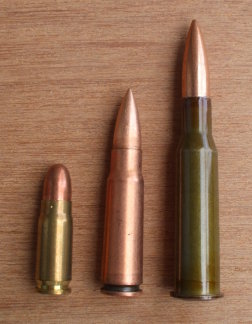
Left:
7.62x25mm Tokarev
Center:
7.62x39mm
Right:
7.62x54R
The 7.62x25mm Tokarev round at left, used in pistols and
submachine guns, has a very blunt bullet.
The other two, rifle rounds, have far more aerodynamic
spitzer type bullets.
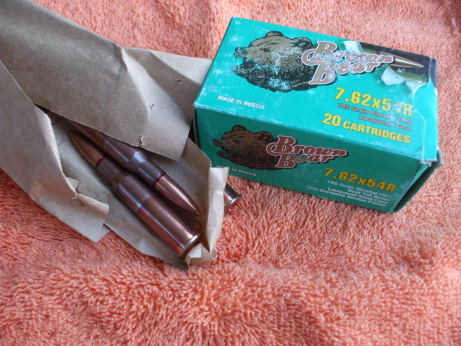
Commercial 7.62x54mmR Ammunition
Commercial 7.62x54mmR ammunition is available. Above is a package from Brown Bear, made in Russia.
It's interesting that it's the same paper-wrapped package of 20 rounds found in the military "spam can" packages.
That's a military surplus package torn open in the above picture.
Bear is made at the CJSC Barnaul Cartridge Plant in the city of Barnaul.
Barnaul, or Барнаул, is an important industrial center, producing a lot of heavy machinery, tires and furniture.
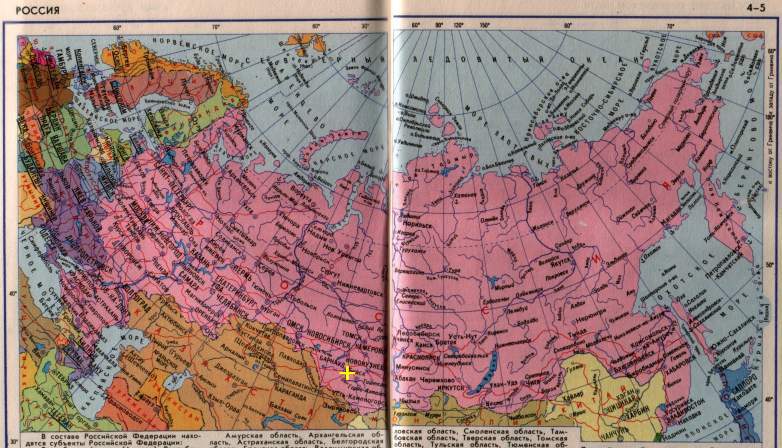
Barnaul is the administrative center of Altai Krai, near Russia's borders with Kazakhstan, China, and Mongolia. It's on the Ob River south of Novosibirsk. It's well west of the Ural Mountains in southern Siberia. See the yellow cross on the map above.
At right you see it on the Ob River, just a little way (on Siberian scale) south of Novosibirsk.
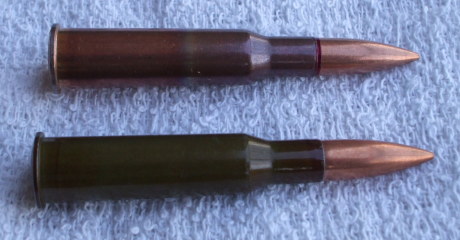
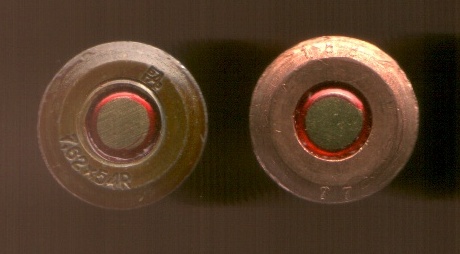
Here you see both commercial and military surplus 7.62x54mmR ammunition.
Above at left, you see the Soviet military surplus cartridge (red rim on bullet) above the Bear commercial cartridge (green lacquered case).
Below you see the Bear commercial cartridge on the left and the Soviet military surplus on the right.
The commercial cartridge case has a clear headstamp: "7.62x54R" and the CJSC Barnaul emblem.
SovietSurplus
Ammo
The headstamp on the surplus cartridge is much less distinct: "77" and "188". The "77" (as in 1977) refers to the year of manufacture, and "188" specifies the Novosibirsk ammunition factory. See the dedicated page for details on how to decode Soviet military surplus ammunition markings.
Notice that the commercial headstamp is impressed (concave) while the military surplus one is raised (convex). Military USSR cartridge headstamps are raised on 7.62x54mmR and larger and sometimes on 7.62x25mm, and impressed on 7.62x39mm and 9x18mm cartridges.
Here are two views of the military surplus (copper-washed case and red band around bullet) and commercial (green lacquered case) ammunition.
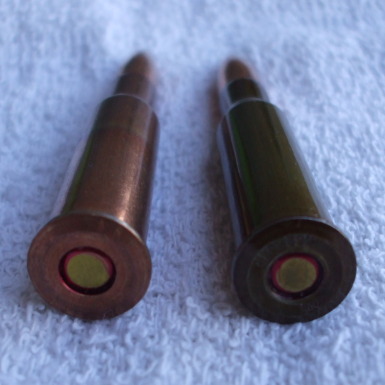
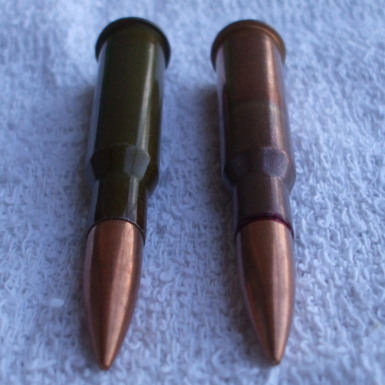
Here are two views of a wooden crate holding military surplus ammunition.
The lower white paper label seems to be in either Czech or Slovak, added to explain the Russian markings written in the Cyrillic script to someone who reads a language that is Slavic but written in the Latin script.
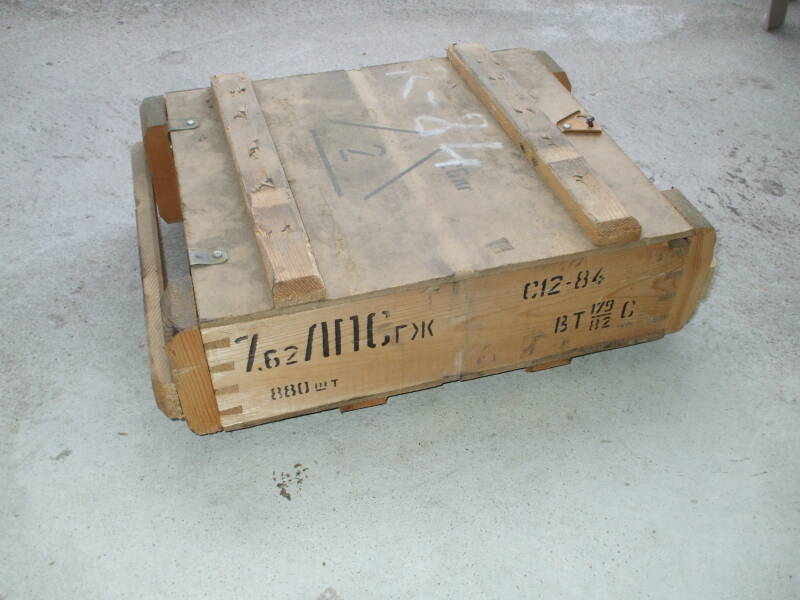
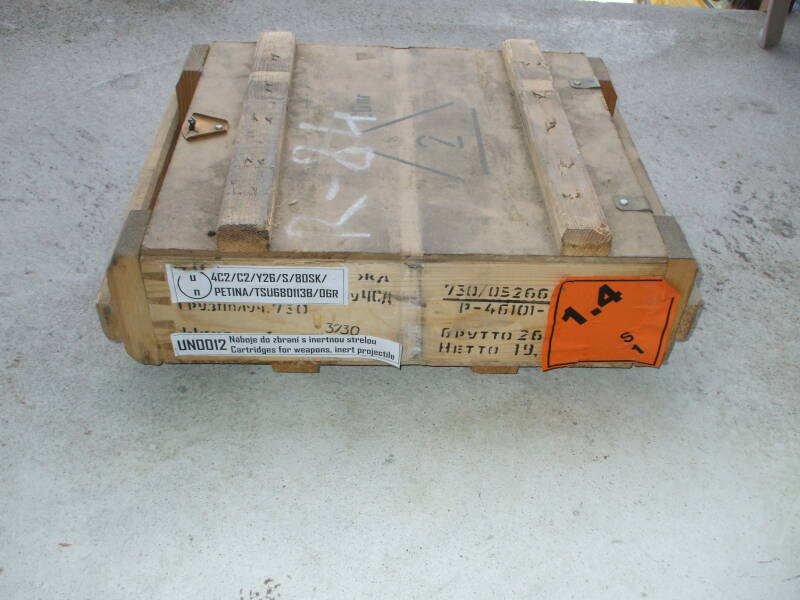
Inside the wooden crate are two green metal "Spam Can" containers. Resting on top is the included can opener. These are Russian military surplus, or more precisely, Soviet given their vintage.
The wooden crates had been opened, inner packages removed and swapped between crates as the dates and lot numbers don't match.
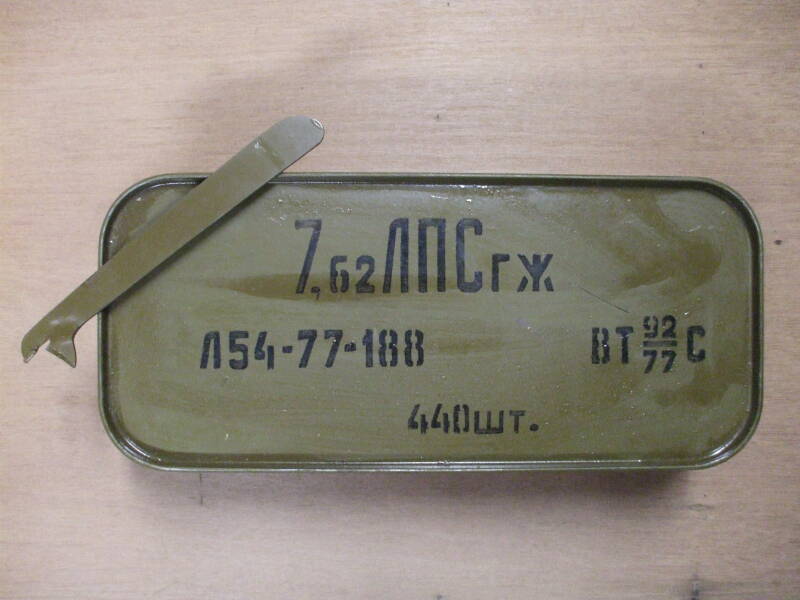
The short version is that ЛПС is equivalent to "military ball" in U.S. nomenclature, but...
See the page on decoding Soviet military surplus ammunition lables for the details.
Opening The Ammunition Can
Let's open this up!
Here I am cranking away with the included can opener tool. It's a right-handed tool and you open the can in a counter-clockwise direction.
Don't worry about memorizing that, it's the only way it works.
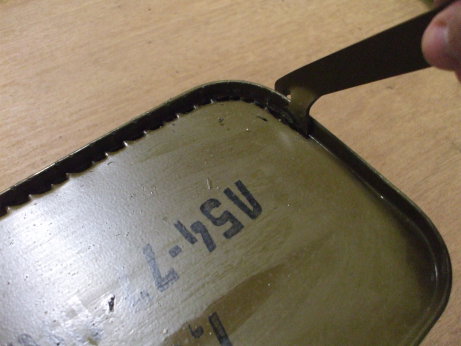
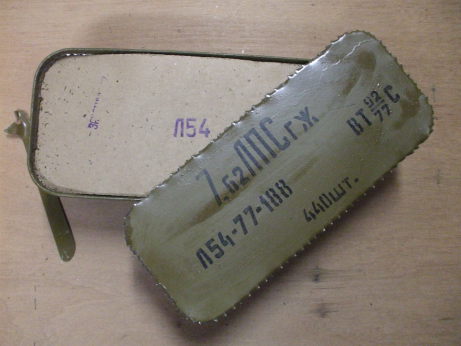
Finally! The can has been painted green with a spotty coat of varnish or lacquer.
Be prepared to sweep up the paint flakes! Or else make sure to do this where you don't mind making a slight mess.
Notice that the cardboard liner under the lid repeats the lot series and number, Л54 in this case.
Watch the serrated edges of the lid! Pry it off and lift the cardboard liner out of the can.
Underneath the lid and cardboard liner you will find 22 tightly-packed paper packets of 20 rounds each.
One in the middle has a cloth ribbon sticking out from either side. Notice that in the fully packed picture.
Use that ribbon to lift out that one packet. Once you get one out, others can be removed much more easily.
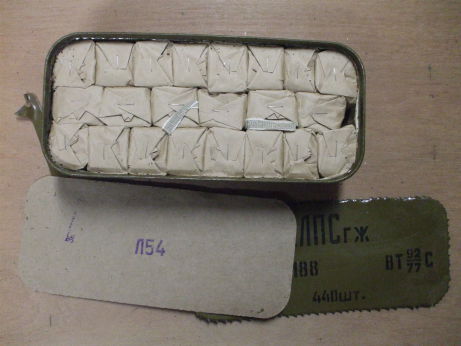
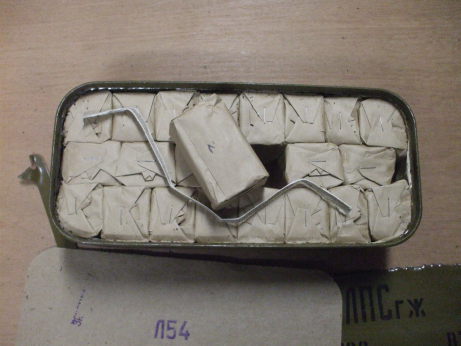
Here is a stripper clip of 5 military surplus rounds ready for loading!
Following that is a comparison between the 7.62x54mmR cartridge, at left in each image, with the American .30-06 cartridge.
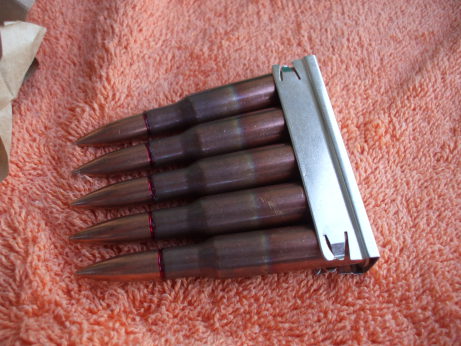
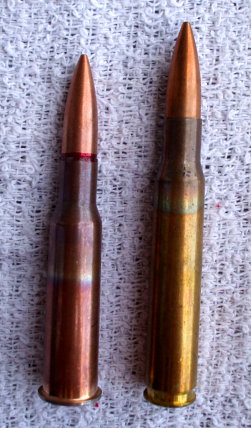
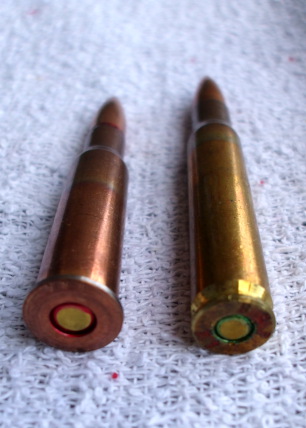
|
Range yards |
Velocity | Energy | ||
| m/sec | ft/sec | joules | ft-lbf | |
| 0 | 863 | 2833 | 3577 | 2638 |
| 50 | 826 | 2711 | 3275 | 2415 |
| 100 | 790 | 2592 | 2993 | 2207 |
| 150 | 755 | 2476 | 2731 | 2014 |
| 200 | 720 | 2363 | 2487 | 1834 |
| 250 | 687 | 2253 | 2262 | 1668 |
| 300 | 654 | 2146 | 2052 | 1513 |
| 350 | 622 | 2042 | 1856 | 1369 |
| 400 | 591 | 1940 | 1676 | 1236 |
| 450 | 561 | 1842 | 1511 | 1114 |
| 500 | 533 | 1748 | 1360 | 1003 |
According to measurements at 7.62x54r.net, military surplus ЛПС rounds fired from an M1891/30 Винтовка Мосина or Vintovka Mosina should provide the performance shown in this table.
Further Information
Now that you have learned about the 7.62x54mmR cartridge,
you might want to read about a rifle that uses it.
Or, you might need to understand Russian labeling on
handgun ammunition.
The Mosin-Nagant
"3-Line" Rifle
Russian Military Nomenclature
for 9x18mm Handgun Ammunition
Decoding Soviet Military
Surplus Ammunition Labels
Mosin-Nagant Cleaning Kit
and the Н/Щ Oil Can
7.62x39mm
Ammunition

